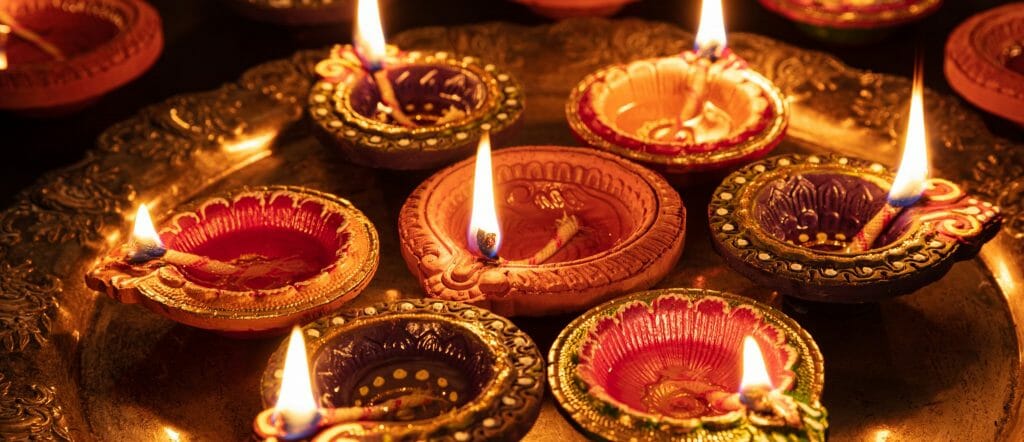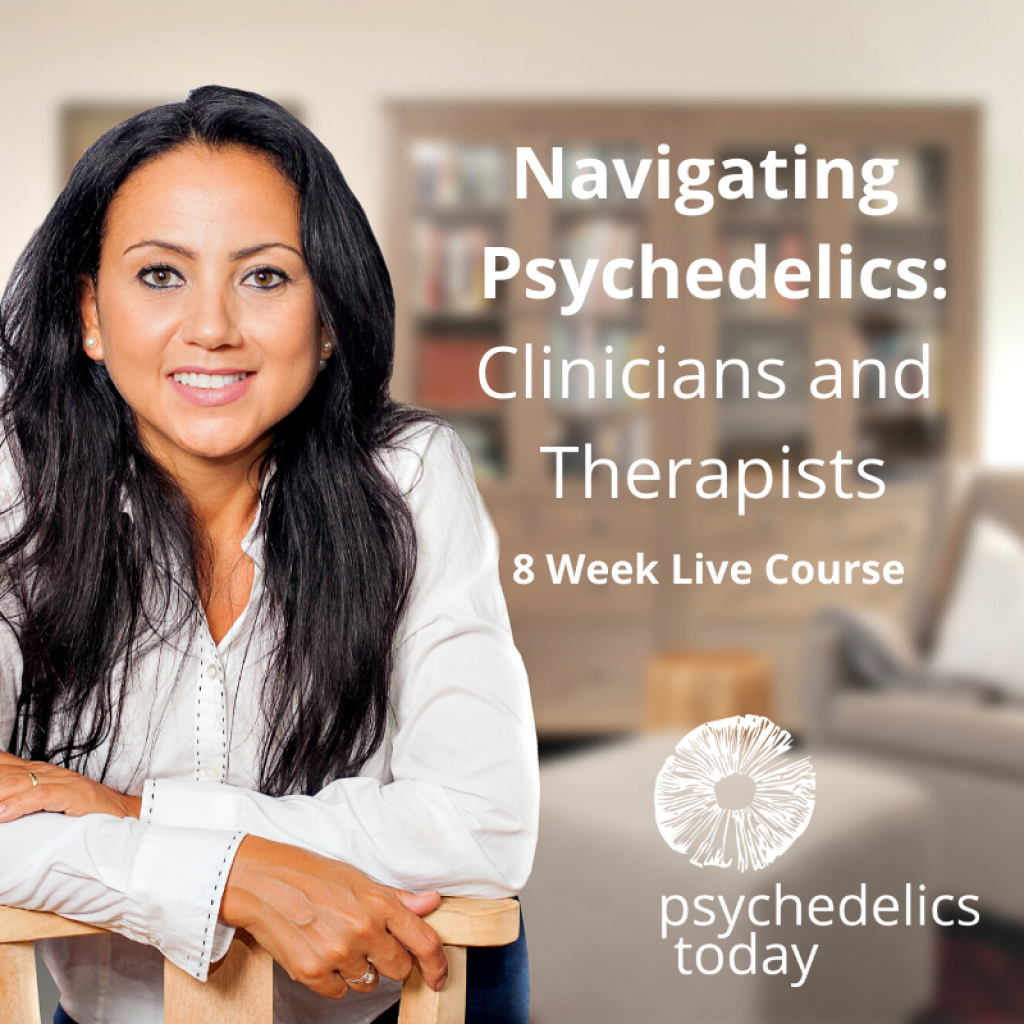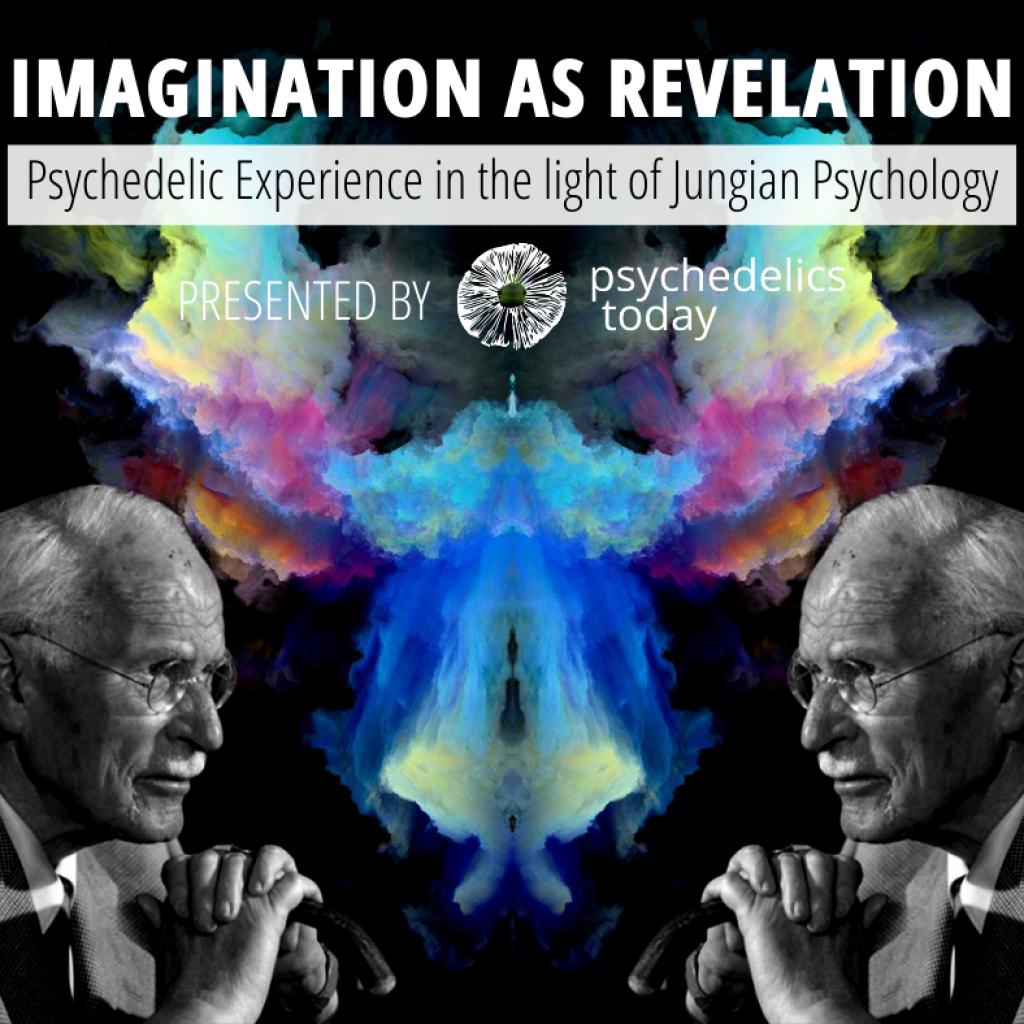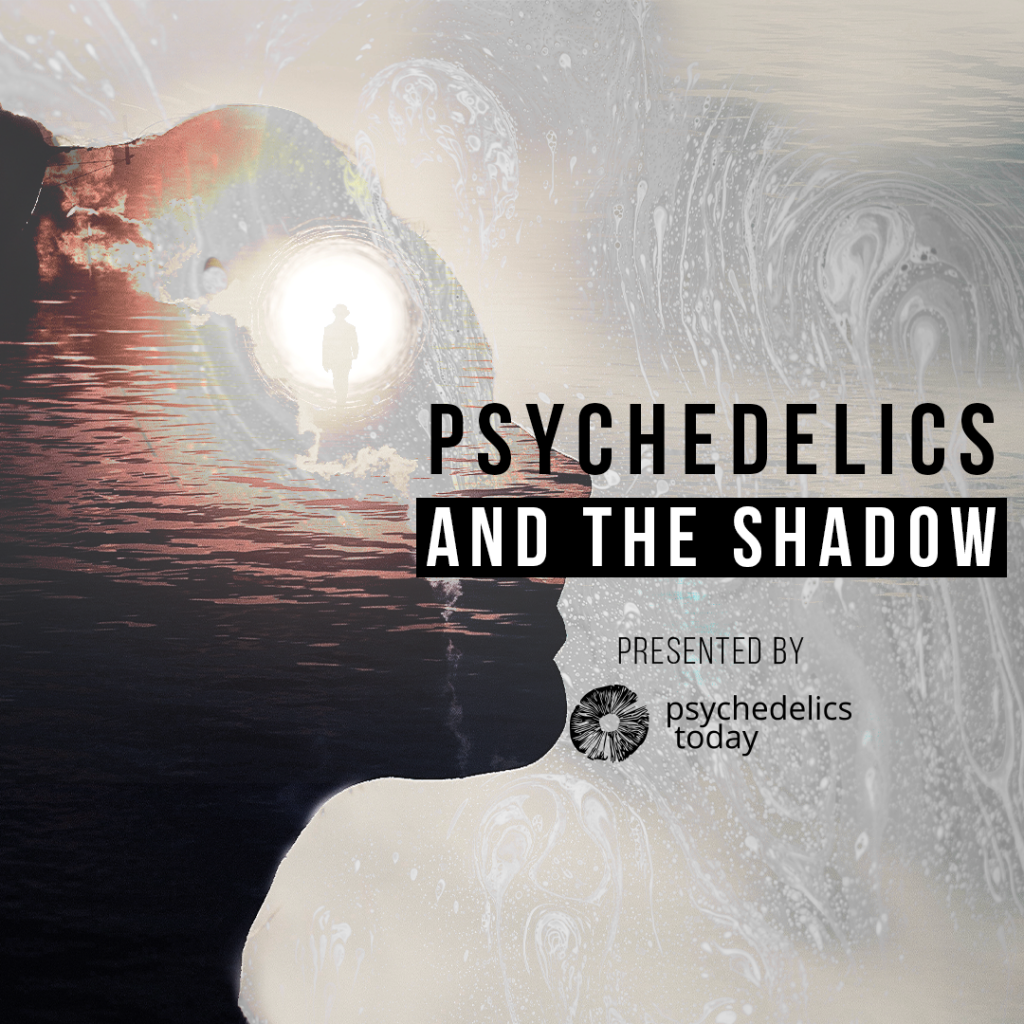By Jasmine Virdi
For decades, the subject of children and psychedelics has been one of great contention. The mere thought of exposing children to mind-altering substances elicits substantial controversy in public opinion, often considered a “no-go zone.” Anything that concerns children and how to best care for them precipitates strong reactions because parents aim to safeguard their well-being and protect them from harm’s way. Nonetheless, after a long period of suppression, we now find ourselves in the midst of a psychedelic renaissance. As access to these substances continues to expand through legalization, decriminalization, and medicalization efforts alike, our conversation redefining the use of these substances should seek to holistically address the groups that interact with them, including children.
Re-examining Cultural Paradigms
Viewing the subject through a Western lens, there is often the conception that child and adolescent brains are not fully developed, and that ingesting psychedelics could be damaging to brain development and identity formation. This view is widely held even among psychedelic enthusiasts, such as lay psychotherapist Ann Shulgin, who believes that “when you are under the age of, say, 16, you haven’t really lived that long. You haven’t had time to find out what the core of your self is.” Shulgin estimates that a well-prepared 15-16-year-old could cope with the experience, but recommends waiting a while “until you’ve lived a little bit” (Mind States, 2017).
Similarly, Armando Lozaiga, certified chemical dependency specialist and president of the Institute of Intercultural Medicine of Nierika A.C., suggests that adolescents from the age of 16 onwards are better psychologically equipped to deal with psychedelic experiences. At that age, “you have more of an emotional intelligence as well as abstract thinking functions,” he says. Lozaiga also contrasts Western and Indigenous perspectives, noting that “through a Western lens, in order to attain benefit, I feel that you have to have undergone certain hardships and have a medicinal need.”
In general, psychedelics are considered to be physiologically safe substances that do not lead to dependence or addiction. In fact, many classic psychedelics, including LSD, psilocybin, and ayahuasca are being researched for their anti-addictive properties. In theory, even if you were to ingest psychedelic substances on a regular basis, the human body is hardwired to develop a tolerance to them in a short timespan, diminishing both their psychoactive and physiological effects.
For many, the idea of pairing psychedelics with children (even in a medical venue) sounds absurd due to the cultural stigma attached. However, medicating young children diagnosed with ADHD with amphetamines like Adderall has become normalized within our societal paradigm. Why then, should it be such a leap for us to imagine that certain psychoactive substances could provide healing benefits to children?
In an interview conducted earlier this year, Mark Haden, the executive director of the Multidisciplinary Association for Psychedelic Studies (MAPS) Canada discussed the topic, suggesting that psychedelic experiences are a health service, reframing the question by asking: “How do youths access health services?” Haden acknowledges that youth access in a medical context would also necessitate parental consent as well as being dependent on the individual child in question. He believes that there is no golden rule for an individual being ready for such experiences, firmly asserting that youth access “isn’t about age, it is about maturity.”
Limited studies have been conducted on psychedelics and children in a medical setting. However, researchers in the 1960s looked at LSD as a treatment for autistic children, concluding that the effects “were very promising and could even be considered excellent for the majority of children.” Despite this, the positive outcomes associated have often been dismissed due to the fact that the study designs employed were not as rigorous or effective when compared to today’s standards. A more recent double-blind study by Yale University is examining the effects of using ketamine as a therapy for treatment-resistant depression in adolescents.
Beyond this, Phase 3 clinical trials for MDMA as a treatment for PTSD are well underway, with MDMA moving ever closer to becoming an FDA-approved treatment. Once MDMA becomes legal, the FDA has signaled its willingness for MDMA to be used as a treatment for adolescents suffering from PTSD.
Regardless of whether or not children should have access to psychedelic substances, the fact remains that a large proportion of adolescents choose to experiment with psychoactive drugs before coming of age and graduating high school. According to the 2016 National Survey on Drug Use and Health, approximately 2 million U.S. adolescents aged 12 to 17 were current users of illicit drugs at the time.
As it stands today, when it comes to drugs, we tend toward a “zero tolerance” policy, strictly writing substances off because they are “bad” and have no perceived value. However, this attitude is itself dangerous as many young people world-over are drawn to experiment with psychedelic substances regardless, resulting in failed or misguided self-initiations that can be damaging and harmful. Our “‘zero tolerance’ style of drug education trivializes the factors underlying actual drug abuse and pathologizes normal adolescent experimentation” (Stuart, 2004).
As greater access to psychedelics awaits on the horizon, we are in dire need for a reform in drug education. The prevalent strategy of repeatedly reinforcing the message of simply avoiding drugs does not provide our youth with ways to maximize the benefits and minimize the risks associated with these substances.
Recognizing the need for a safe, non-judgemental space to talk about such delicate subjects, Rebecca Kronman, a licensed therapist specializing in psychedelic integration, founded Plant Parenthood, the only digital and in-person community dedicated to exploring how psychedelics impact modern parenting as well as de-stigmatizing the subject of children and psychedelics.
Reflecting on the origins of Plant Parenthood, Kronman shares that the idea for the project emerged through conversations with parent peers about psychedelics. “Many shared stories about their own use and how it changed them as a parent, and some shared about their use while their children were present (sometimes sleeping, sometimes not),” she says. “When these conversations can take place in a loving, open way, it makes space for more dialogue and inquiry, which is enormously helpful to reducing stigma.”
Learning from Indigenous Cultures
Taking a step beyond our cultural conceptions, there are numerous examples in which children are included in psychedelic medicine rituals, including non-substance participation in ceremony as well as use of psychedelic substances throughout all stages of the life cycle.
Kronman recently wrote on the topic, emphasizing the value of using Indigenous traditions to re-evaluate Western paradigms. “When we look towards Indigenous cultures, the paradigms that govern our thinking around children and psychedelics are reflected back to us,” she explains. “It allows us to see that it doesn’t have to be this way.”
Within the Indigenous Huichol culture of Mexico, children are thought to begin ingesting peyote around the age of six, as they are able to verbally articulate their experience at that age (Stuart, 2004). Comparatively, within the Native American Church (NAC), younger children are less likely to consume peyote in ceremony, and are usually invited into the tipi as a rite of passage around the age of 12, when they hit puberty. Families in the Brazilian ayahuasca churches, Santo Daime and União do Vegetal, likewise allow children to participate in ceremonies and have also been known to give extremely small doses of ayahuasca to newborn babies as a symbolic initiation into their tradition.
Contrary to Western youth, Kronman (2020) highlighted the fact that “Indigenous children are not using psychedelics for escapism, experimentation, or in ways that are contrary to their society’s norms.” Instead, the ingestion of psychoactive plant sacraments is culturally ingrained into a way of life and the use of substances can be both culturally and spiritually reaffirming, reinforcing the values of the community. “If it is in ceremony, and Huichol children want to eat peyote, it is reinforced, as it is part of them fulfilling their spiritual identity,” says Lozaiga. “It is not a drug, it is a spiritual plant completely free of prejudice, and they know that it is not going to do them harm.”
Although both peyote and ayahuasca are Schedule I substances, Indigenous groups and ayahuasca communities are entitled access to their medicines through religious freedom laws. In the United States, Indigenous adolescents are free to participate in NAC road meetings (ceremonies) without facing legal hurdles due to their religious exemption, allowing them to use peyote as a ceremonial sacrament. Within the Brazilian ayahuasca churches, the consumption of ayahuasca by pregnant women and children is considered as an “exercise of parental rights” (Labate, 2011).
Childhood and adolescence are both periods characterized by significant brain development, and naturally, the use of substances that influence our brain functioning and development should be approached with caution. Hence, there is a paucity of research examining how psychedelics affect the developing brain.
Even so, there is no evidence that the long-term use of peyote causes brain damage and mental health issues. On the contrary, a 2015 study attempted to understand the long-term effects of peyote consumption in Native Americans, finding that there was no evidence of residual neurocognitive problems and that the subjects actually scored significantly higher on overall mental health measures compared to members of the same tribe who were of a different religion and did not use peyote. Similarly, another study analyzed the effects of ayahuasca on adolescents, comparing 40 Brazilian adolescents who consumed ayahuasca to a control group and finding no measurable difference in scores on neuropsychological and psychiatric tests.
In Indigenous peyote traditions, many women ingest peyote throughout different stages of their life cycle, including eating peyote prenatally, while nursing, and sometimes even during childbirth, as it is thought to help prevent miscarriage, allow for the healthy development of the fetus, increase breast milk production, and ease the experience of labor.
As it happens, the theme of pregnancy and peyote is intimately intertwined with the Huichol origin myth of the first pilgrimage to the sacred peyote desert, Wirikuta. In the myth, the Earth Goddess (Utüanaka) and the Mother of Peyote (Wiri’uwi) begin to menstruate before they enter the desert and encounter peyote, only to consume it and fall pregnant.
Stacy Schaefer, Professor Emerita of anthropology at California State University, has devoted much of her research career to the topic of pregnancy and peyote, illuminating how Huichol women use peyote throughout their life cycle as well as providing theories for how it may interact with the female reproductive system. Through her research, Schaefer has explored how consuming peyote throughout pregnancy may affect a baby’s cognitive development in the womb. With limited research on the processes of prenatal cognitive development, she speculates that peyote might stimulate the fetus’ neocortex and help with the connection of neurons in the brain.
Schaefer’s hypothesis is based on the idea that the more stimulation a baby gets, the better its nervous system will develop, including cognitive and reflex abilities. She compares this to an existing theory which posits that the reason newborn babies require so much sleep is because they do not get the necessary stimulation from the environment in their waking states. “Peyote is a stimulant, and I wonder what is going on as their brains are developing and these neural pathways are being created,” says Schaefer. “However, this is something that can’t be proven unless there is more research.”
In Schaefer’s field studies, some Huichol women suggest that eating peyote when you are pregnant can predispose young children toward becoming shamans. Schaefer attempts to make sense of this in relation to her theory. “We use very little of our brain capacity and perhaps the neural pathways that are being stimulated can create an even greater consciousness or awareness that wouldn’t normally exist,” she says. “Indigenous societies would not continue to do this if it was maladaptive. They would notice if something was wrong through trial and error,” she emphasizes. “They would see it is causing serious problems to their children and pregnancies, and they simply wouldn’t do it.”
“All I can say is that I can propose these ideas, but I don’t feel comfortable promoting children- especially young children consuming psychedelics, including peyote, in Western society, unless there is more medical and scientific research done,” says Schaefer.
Going beyond peyote traditions, it is also increasingly common within the Santo Daime and União do Vegetal ayahuasca churches for women to drink ayahuasca throughout their pregnancies and during the process of childbirth.
There is conflicting information revolving around the subject of pregnant women ingesting ayahuasca and peyote. Some advocate avoiding consuming ayahuasca and peyote during the first trimester in which the embryo undergoes critical development (Schaefer, 2018), while others suggest that it is perfectly safe to consume ayahuasca throughout the whole pregnancy (Labate, 2011).
Glauber Loures de Assis, sociologist and president of Céu da Divina Estrela, a Brazilian Santo Daime church, shared that his wife drank ayahuasca during the process of childbirth, finding it helpful and spiritually important. Beyond that, Loures de Assis shared, “The first thing I did when my son was born was to give him a drop of ayahuasca. In Santo Daime, it is in our tradition to serve ayahuasca to pregnant women and to children alike,” he says. “However, they often drink smaller quantities as a symbolic gesture.”
Non-Ingestive Ceremonial Participation
For pro-psychedelic parents looking to help lay the foundations of their children’s spiritual lives and expose them to the ceremonial aspect of psychedelic use (without them actively ingesting substances), Kronman (2020) suggests that introducing children to the ceremonial aspect of psychedelic use by itself can serve as a model for Western parents to teach their children important values about community, spirituality, and nature on an experiential level.
Lozaiga shared about his own experiences raising his children in this context: “In my experience, we sensitized our children to ceremonies, but we didn’t necessarily want to give substances to the kids until they were adolescents. For us, it was more about exposing them to the ritual; to the sacredness that revolves around the consumption of plants, rather than inducing visionary effects.”
“For many young adolescents, I think psychedelics can do more harm than good,” he says. “There is a general lack of guidance, and looking ahead, if we were to destigmatize these substances to the point where we could look at them objectively, I would like to see initiatory spaces in which young adults can come and be introduced to the sacred dimension of themselves in a guided way.”
Lozaiga additionally believes that incorporating youth in ceremonies and educating them about psychedelic medicines could serve as drug abuse prevention. “These plant medicines can help people be more inoculated, as once you have sat in ceremony, you begin to understand that it is no game.”
Re-examining Rites of Passage
It is clear that in our modern, industrialized culture, we are missing meaningful rites of passage that help our youth transition into adulthood. It has been thought that modern-day Western society allows for the delay of adult responsibilities, in that youth are educated for extended periods of time to meet the employment demands of today’s complex economy (Stuart, 2004). Many young people seek ways to claim the independence of adulthood, and experimenting with psychedelics is one of those ways.
Despite contention over what age adolescents should have access to psychedelic substances, many agree that under the right circumstances, with the proper guidance and a controlled set and setting, such experiences could potentially be beneficial in serving an initiatory function for young people. “I think it is treacherous in Western society to promote psychedelics with children from birth until puberty,” says Schaefer. “However, at puberty and adolescence, under the right circumstances, with a proper support system in place, it has the potential to be an incredible rite of passage.”
In many ways, Western, industrialized society has become bereft of meaningful rites of passage. However, our society is still permeated with rituals like the celebration of birthdays, Bar Mitzvahs, graduations, and so on. Exploring how our rituals have become deprived of meaning and living spirit, beloved guru and countercultural figure, Ram Dass, suggested that the main problem with modern-day rites of passage is that they “no longer provide direct contact with the numinous” (Dass, 2004).
It is important to tread with care despite the existence of both anecdotal and empirical evidence, in that there are very few peer-reviewed scientific studies observing how psychedelics affect adolescents and how they affect children developmentally when mothers ingest prenatally or during nursing. However, we can learn from Indigenous communities and their age-old cultural integration of plant medicines throughout the life cycle, better preparing our own children to approach these substances with respect. By including children in the psychedelic dialogue, we pave the way to dissolving the taboo and stigma that are often a cause for harm among Western adolescents, as well as cultivating reverence for the sacredness of these substances.
In re-examining the principles that have dominated our perceptions in the West, and looking beyond the boundaries of our society’s current paradigm while integrating the wisdom of other cultures, we can develop a fuller and more nuanced understanding of these substances and what they can add to our lives.
References
Dass, R. (2004) Psychedelic Rites of Passage. Multidisciplinary Association for Psychedelic Studies, 14(2), 4-7. https://maps.org/news-letters/v14n2/v14n2_6-7.pdf
Kronman, R. L. (2020). Children and psychedelics: Using indigenous wisdom to examine western paradigms. Chacruna. https://chacruna.net/children-and-psychedelics-using-indigenous-wisdom-to-examine-western-paradigms/
Labate, B. C. (2011). Consumption of ayahuasca by children and pregnant women: medical controversies and religious perspectives. Journal of Psychoactive Drugs, 43(1), 27–35. https://www.researchgate.net/publication/51167576_Consumption_of_Ayahuasca_by_Children_and_Pregnant_Women_Medical_Controversies_and_Religious_Perspectives
Mind States. (2017). Children & psychedelics: Dosing the kids? https://www.youtube.com/watch?v=sifMmkwnUec&t=92s
Schaefer, S. B. (2019). Beautiful Flowers: Women and peyote in Indigenous traditions. Multidisciplinary Association for Psychedelic Studies, 29 (1), 8–13. https://s3-us-west-1.amazonaws.com/mapscontent/news-letters/v29n1/v29n1_p8-13.pdf
Schaefer, S. B. (2018) Fertile Grounds? – Peyote and the Human Reproductive System. In McKenna. D. (Ed.) Ethnopharmacologic Search for Psychoactive Drugs (Vol. 1 & 2): 50 Years of Research. Synergetic Press.
Stuart, R. (2004). Psychedelic Family Values. Multidisciplinary Association for Psychedelic Studies, 14(2), 47–52. https://maps.org/news-letters/v14n2/psychedelic_family_values.pdf
About the Author

Jasmine Virdi is a freelance writer and editor. Since 2018, she has been working for the fiercely independent publishing company Synergetic Press, where her passions for ecology, ethnobotany, and psychoactive substances converge. Jasmine is also a writer for Psychedelics Today, Chacruna.net, Lucid News, and Cosmic Sister. She is currently pursuing an MSc in Spirituality, Consciousness, and Transpersonal Psychology at the Alef Trust with the future aim of working in psychedelic integration therapy. Jasmine’s goal as an advocate for psychoactive substances is to raise awareness of the socio-historical context in which these substances emerged in order to help integrate them into our modern-day lives in a safe, grounded and meaningful way.





